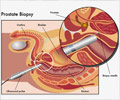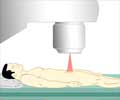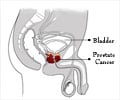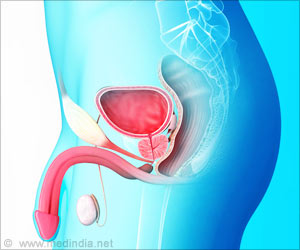A research paper in the latest issue of the Medical Journal of Australia says that men most at risk of getting prostate cancer do not know much about the disease, potentially delaying diagnosis and treatment.
After skin cancer, prostate cancer is the most common form of cancer affecting Australian men, with incidence rates increasing dramatically over the age of 65, and mortality rates increasing more rapidly for men over 70.Dr Diane Arnold-Reed and Dr Alan Wright, from the University of Notre Dame Australia’s School of Medicine, and their co-authors surveyed 503 men aged between 40 and 80 years to find out their level of understanding about the second most common cause of cancer death in Australian men.
Dr Wright said 80 per cent of the survey group did not know the function of the prostate. Forty-eight per cent failed to recognise prostate cancer as the most common internal cancer in men, but 58 per cent thought getting the disease would lead to a quick death.
“Knowledge concerning prostate cancer was generally poor, but previous exposure increased knowledge of treatment options and side effects,” he said.
“There was a high and erroneous expectation [89%] … that prostate cancer would be somewhat or very likely to cause impotence.”
Fifty-three per cent of the men had no knowledge of the side effects of treatments and when asked about how they would make a decision about treatment for prostate cancer, 70 per cent said they would ask their GP or specialist for information on their options.
Advertisement
Dr Wright said that although patients were aware of their own lack of knowledge about prostate cancer, some were reticent to ask for help in decision-making.
Advertisement
Prostate Cancer Incidence In NSW
In a separate research paper in the Medical Journal of Australia, researchers found a sustained increase in prostate cancer incidence in NSW after prostate-specific antigen (PSA) testing was introduced in 1988.
David Smith, from the Cancer Council NSW, and his co-authors studied the trends in PSA testing and the incidence of prostate cancer and mortality.
Mr Smith said the number of PSA tests each year more than doubled between 1994 and 2006 – with an estimated 19,602 more men than expected from previous trends diagnosed with prostate cancer between 1989 and 2005.
“The incidence of recorded advanced prostate cancer at diagnosis fell from 13 per 100,000 men in 1987–1991 to seven per 100,000 men in 2002–2005. The age-standardised mortality from prostate cancer increased by 3.6 per cent per year between 1984 and 1990 and then fell by two per cent per year to 2005. There were 980 deaths from prostate cancer in 2005,” he said.
“Whatever its cause, the downward trend in prostate cancer mortality is clearly favourable; the upward trend in incidence may be less so.
“Embracing PSA testing as a de facto population-wide screening test has probably resulted in benefits for some men diagnosed with earlier-stage disease but harm for others who were over-diagnosed [with cancers that would never otherwise present clinically],” Mr Smith said.
Source-MJA
RAS/S







![Prostate Specific Antigen [PSA] Prostate Specific Antigen [PSA]](https://www.medindia.net/images/common/patientinfo/120_100/prostate-specific-antigen.jpg)







